Top 10 Most Beautiful Historical Sites in Poland
Poland is well-known for its tumultuous but interesting past. Numerous historic sites may be found throughout the country, attracting visitors from all over ... read more...the world. If you enjoy history, Poland should be on your list of potential trip destinations. Here are the 10 most beautiful historical sites in Poland.
-
The historic core quarter of Kraków, Poland is known as Kraków Old Town. It is one of Poland's most well-known ancient districts, and it served as the political heart of the country from 1038 until King Sigismund III Vasa moved his court to Warsaw in 1596.
The entire medieval old town, known as Cracow's Historic Centre, was one of the first places to be inscribed on UNESCO's original World Heritage List. The ancient town is also one of Poland's recognized national Historic Monuments, chosen in the first round and monitored by the National Heritage Board of Poland.
The medieval city of Kraków was encircled by a 3 km (1.9 mph) defensive wall with 46 towers and seven main gates. The fortifications that surround the Old Town were built over two centuries. A variety of historic landmarks, including St. Mary's Basilica (Kościół Mariacki), Church of St. Wojciech (St. Adalbert's), Church of St. Barbara, and other national treasures, are located nearby. The Renaissance cloth hall Sukiennice (now containing souvenir stores, restaurants, and merchant booths) lies in the heart of the plaza, surrounded by kamienice (row homes) and noble residences, with the National Gallery of Art upstairs.
The Royal Road, the coronation route for the Kings of Poland, cuts through the entire region. The route begins at St. Florian's Church in the medieval district of Kleparz, just outside the old city walls' northern face; continues past the Barbican of Kraków (Barbakan), erected in 1499, and enters Stare Miasto through the Florian Gate. It runs down Floriaska Street, through the Main Square, and up Grodzka Street to Wawel, the former royal residence overlooking the Vistula River.
Location: Kraków, Kraków County, Lesser Poland Voivodeship, Poland
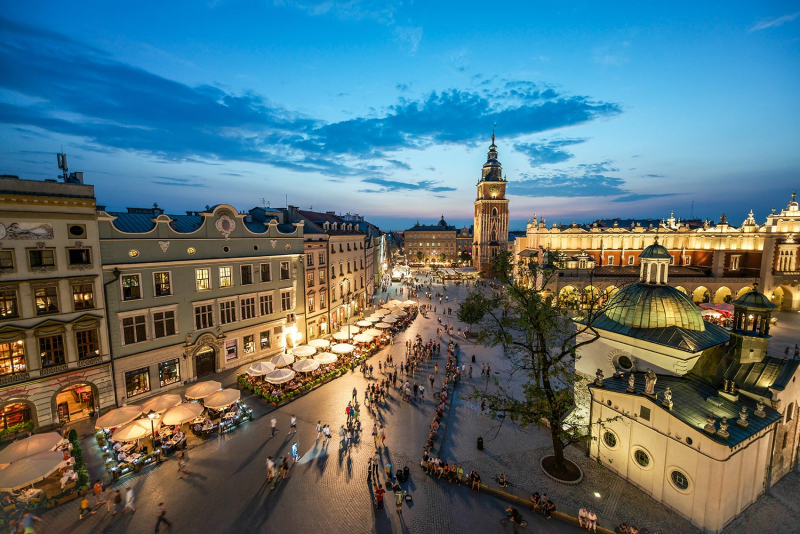
Photo: isango.com Video: Arwin Tours -
The Wieliczka Salt Mine is located in the Kraków metropolitan region, in the town of Wieliczka in southern Poland. The upwelling brine has been used to manufacture sodium chloride (table salt) since Neolithic times. The Wieliczka Salt Mine, which was discovered in the 13th century and is one of the world's oldest operational salt mines, produced table salt continuously until 2007.
The Wieliczka Salt Mine is now a UNESCO World Heritage Site and an official Polish Historic Monument. The tunnels and labyrinthine pathways, exhibitions of old salt-mining technologies, a subterranean lake, four chapels, and countless statues carved out of rock salt by miners, as well as more recent sculptures by contemporary artists, are among the attractions.
A chapel and reception area are available for special gatherings, such as weddings. The walls of a chamber are carved by miners to look like wood, similar to wooden churches built in the early centuries. The mine's 64-metre (210-foot) level is reached through a wooden stairway. A 3-kilometer (1.9-mile) tour takes visitors through hallways, chapels, statues, and a 135-meter (443-foot) underground lake. Visitors are returned to the surface by an elevator, which holds 36 people and takes around 30 seconds to go.
Location: Wieliczka, Poland
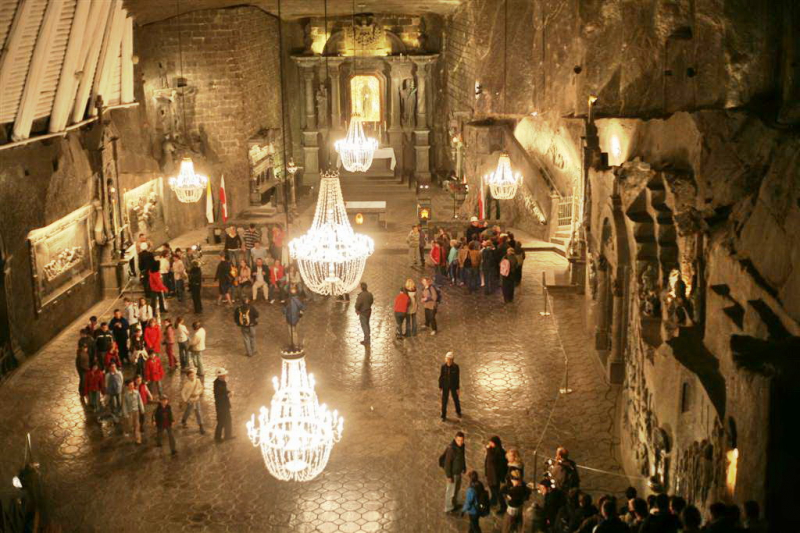
Photo: en.wikipedia.org Video: Travel And Discover -
During World War II and the Holocaust, Nazi Germany ran Auschwitz Birkenau, a network of over 40 concentration and death camps in occupied Poland.
Regarded as one of the most beautiful historical sites in Poland, Auschwitz was a prison camp, an extermination camp, and a slave-labor camp located near the industrial town of Oświęcim in southern Poland (in a region of the country that was occupied by Germany at the start of World War II). Auschwitz has become the symbol of the "final solution," a virtual synonym for the Holocaust, as the most murderous of the Nazi extermination camps. At Auschwitz, between 1.1 and 1.5 million people died, with 90% of them being Jews. 19,000 Roma were kept at the camp until the Nazis gassed them on July 31, 1944, making them the only other victim group killed in family units with the Jews. At Auschwitz, when 83,000 Poles were killed or perished, they were the second-largest victim group.
The SS transported the majority of the camp's population west on a death march to sites inside Germany and Austria as the Soviet Red Army approached Auschwitz in January 1945, near the end of the war. The camp was liberated by Soviet soldiers on January 27, 1945, which has been observed as International Holocaust Remembrance Day since 2005. On the site of Auschwitz I and II, Poland established the Auschwitz-Birkenau State Museum in 1947, and UNESCO designated it as a World Heritage Site in 1979.
Location: near the town of Oświęcim, Poland
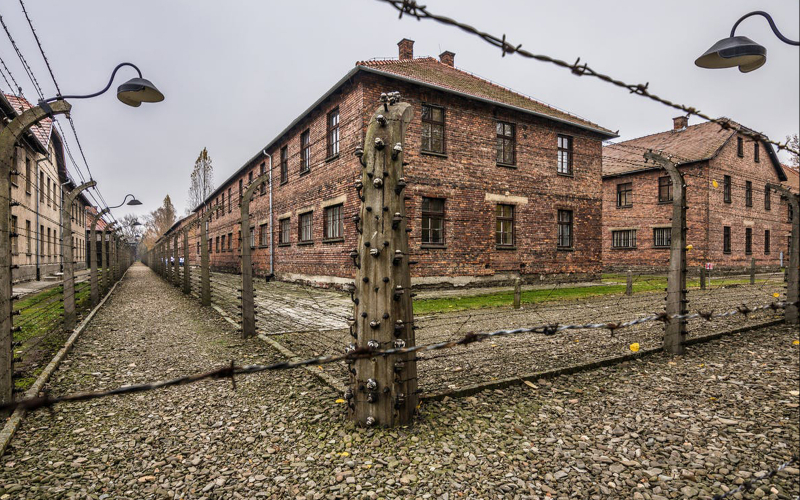
Photo: theauschwitztours.com Video: Travelwithchris -
Białowieża National Park is located in the Podlaskie Voivodeship in Eastern Poland, near the Belarusian border. The park covers a total area of 105.2 square kilometers (40.6 sq mi). It is 62 kilometers (39 miles) southeast of Białystok (Poland). It is recognized for preserving the best-preserved portion of Europe's remaining temperate primeval forest fragment, the Białowieża Forest, which once reputedly stretched across the European Plain.
The world's largest population of European bison, the continent's heaviest land animals, may be found here. The Belarusian side of the border goes through the forest, and the Belovezhskaya Pushcha National Park lies adjacent to the Belarusian side. Within the forest, hikers and cyclists can cross the border. According to one study, the park brings in roughly 72 million zlotys in tourism money per year.
As one of the most beautiful historical sites in Poland, the park's biological richness is its distinguishing feature. Białowieża National Park is the only natural property in Poland that has been listed as a UNESCO World Heritage Site. Białowieża Forest Biosphere Reserve's most important – central zone is the Park.
Location: Podlaskie Voivodeship, Poland

Photo: viator.com Video: Anthony - Céline -
The oldest area of Warsaw, Poland's capital city, is known as Warsaw Old Town. It is bordered by the Gdańsk Boulevards, the Vistula River's bank, Grodzka, Mostowa, and Podwale Streets, and the Vistula River's bank. As one of the most beautiful historical sites in Poland, Warsaw Old Town is one of Warsaw's most well-known tourist attractions. The Old Town Market Place, which is densely packed with restaurants, cafés, and stores, is the area's beating heart. The city walls, St. John's Cathedral, and the Barbican, which connects Warsaw Old Town and Warsaw New Town, are all examples of medieval architecture.
The Old Town Market Place, which dates from the end of the 13th century, is the genuine heart of the Old Town, and it was the heart of all of Warsaw until the end of the 18th century. When entering from the more modern core of Warsaw, a visitor's first view of the recreated Old Town is Castle Square. It's a spectacular vista, dominated by Zygmunt's Column, which looms over the lovely Old Townhouses. Castle Square, sandwiched between the Old Town and the Royal Castle, is rich in history. The Kraków Gate, which led into the city, was located here.
Canon Square is a small triangular square behind St. John's Cathedral. The bronze bell of Warsaw, which Grand Crown Treasurer Jan Mikoaj Daniowicz founded in 1646 for the Jesuit Church in Jaroslaw, stands in the center of the square. A covered corridor connects the Canon Square and the Royal Square, built for Queen Anna Jagiellon in the late 16th century and expanded in the 1620s.
Location: Warsaw, Mazovia Province, Poland
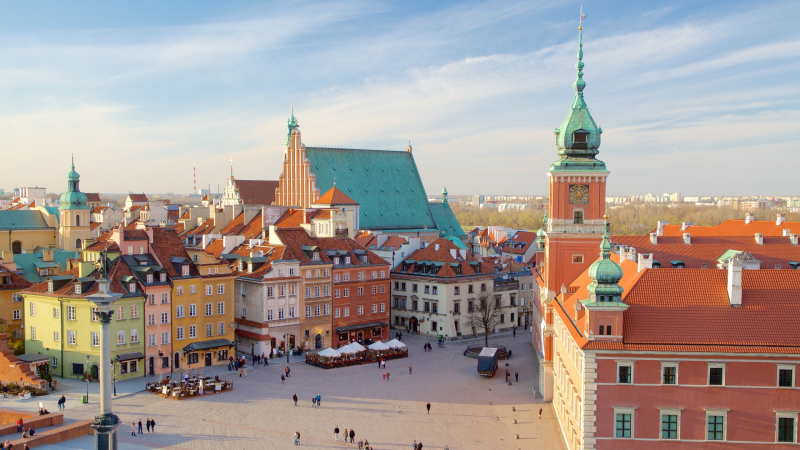
Photo: expedia.com.hk Video: Danish Walking TV -
The Castle of the Teutonic Order in Malbork is a 13th-century Teutonic castle and stronghold near the Polish town of Malbork. It is a UNESCO World Heritage Site and the world's largest castle in terms of land size.
It was built in the shape of an Ordensburg fortification by the Teutonic Knights, a German Catholic monastic order of crusaders. Marienburg was given to the Order in honor of Mary, Jesus' mother. During the Thirteen Years' War, Bohemian mercenaries sold it to King Casimir IV of Poland in exchange for indemnities in 1457, and it then served as one of several Polish royal residences and the seat of Polish offices and institutions, interrupted by several years of Swedish occupation, until the First Partition of Poland in 1772. From then until 1945, the castle was under German control for more than 170 years.
The Castle of the Teutonic Order in Malbork is a superb example of a medieval fortification and, when completed in 1406, was the largest brick castle in the world. In December 1997, UNESCO listed the "Castle of the Teutonic Order in Malbork" and the Malbork Castle Museum as World Heritage Sites. It is one of two World Heritage Sites in the region (north-central Poland), together with the 1231-founded "Medieval Town of Toruń". Malbork Castle was also recognized as a National Historic Monument in Poland on September 16, 1994.
Location: Malbork, Poland
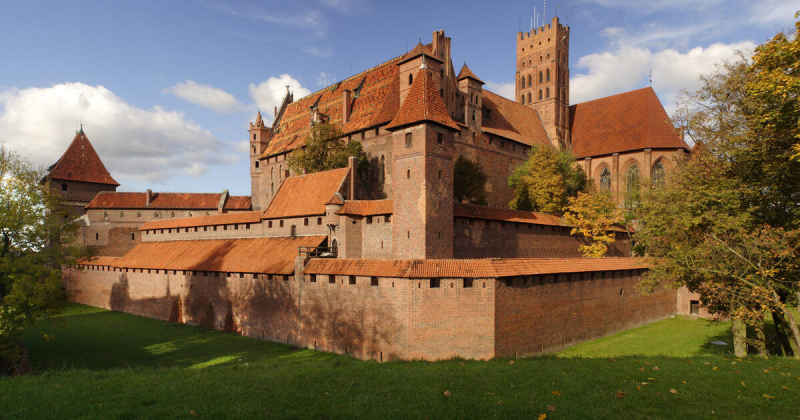
Photo: whc.unesco.org Video: Travel And Discover -
The Medieval Town of Toruń is the city's oldest historic district. It is a World Heritage Site in Poland. According to UNESCO, its value stems from the fact that it is a small historic trading city that has preserved to a surprising extent its original street arrangement and superb early buildings, and which presents an extremely full picture of medieval life. The Medieval Town is 60 ha in size, with a buffer zone of 300 ha. Toruń Old Town, Toruń New Town, and Toruń Castle make up the city.
The Medieval Town of Toruń was built on the site of an ancient Slavic trading town that had existed for roughly 500 years and dates back to the 13th century when the Teutonic Knights Hermann von Salza and Hermann Balk granted the city of Toruń a town charter in 1233. The town, which was originally formed mostly of the section now known as Toruń Old Town and the Toruń Castle, grew into a significant commercial hub and was a prominent member of the Hanseatic League. Toruń New Town grew east of the Old Town and north of the castle as the town expanded rapidly.
The Medieval Town of Toruń is divided into three sections: Toruń Old Town in the west, Toruń New Town in the east, and Toruń Castle in the south-east. The Old Town is centered on the Old Town Market Place. The Medieval Town Hall, Cathedral Basilica of St. John the Baptist and St. John the Evangelist, Church of the Assumption of the Blessed Virgin Mary, and the remains of the old town wall are among the major structures and monuments there.
The Medieval Town of Toruń was classified as one of Poland's official national historic monuments on September 16, 1994. The National Heritage Board of Poland maintains its listing.
Location: Toruń, Kuyavian-Pomeranian Voivodeship, Poland
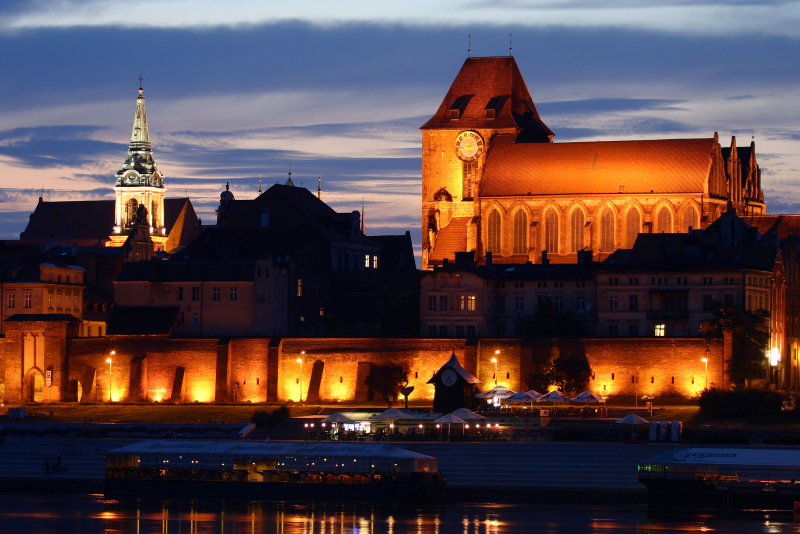
Photo: commons.wikimedia.org Video: World Heritage Journey -
Kalwaria Zebrzydowska is a town in southern Poland with significant cultural and theological significance for Polish Catholics. The entire historical, architectural, and pilgrimage complex, which includes a basilica, a Franciscan monastery, and multiple streets, was included on the UNESCO World Heritage List in 1999.
Kalwaria Zebrzydowska is in the Lesser Poland Voivodship (Malopolska), 40 kilometers south-west of Krakow. It sprang up near the Cedron River, between two gorgeous mountains, Lanckoronska (555 meters above sea level) and Zar (527 m). The population of this little town is roughly 4,000 people.
Every year, two major events draw large crowds to this gorgeous location. One of these events occurs during Holy Week when pilgrims flock to see the colorful, dramatic, and realistic Passion Play depicting the final days of Jesus' life. The drama, viewed as a collective catharsis, provides a more in-depth understanding of traditional Polish Catholicism. During the summer, Kalwaria comes alive during the Festival of the Assumption (15 August), Poland's most important Marian holiday.
Pilgrims can visit all of the lovely little churches, chapels, and other monuments that can be found within this romantic setting, whether it is summer or winter. The Tomb of Jesus Christ, the House of Mary, and the Western Gate are especially valuable. The miracle painting of the Virgin Mary and Child, placed in the Zebrzydowski Chapel, is the most notable religious artifact to be found here.
Location: Kalwaria Zebrzydowska, Wadowice, Poland
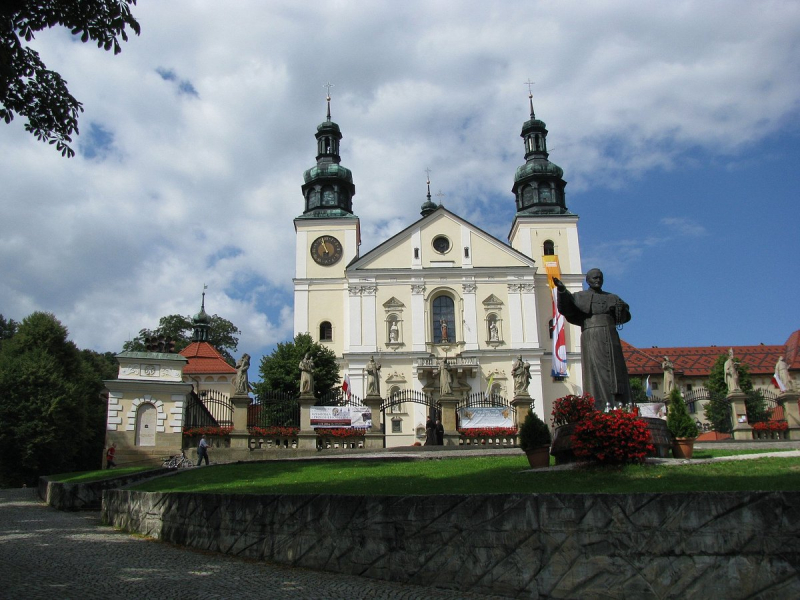
Photo: tripadvisor.com Video: World Heritage Journey -
The Zamość Old City is the city's oldest historic district in Poland. It is one of Poland's World Heritage Sites (added in 1992). According to UNESCO, the value of this monument stems from its status as an outstanding example of a late-16th-century Renaissance planned town that retains its original layout and fortifications, as well as many buildings of particular interest that blend Italian and Central European architectural traditions.
On September 16, 1994, the neighborhood was classified as one of Poland's official national Historic Monuments. The National Heritage Board of Poland maintains its listing.
The Zamość Old City was built on a hexagonal design with two separate sections: the noble homes on the west and the town itself on the east established around three squares (the Grand Market Square, the Salt Market Square, and the Water Market Square).
The Grand Market Square, surrounded by several kamienice, and Zamość City Hall are among the city's key landmarks. The Zamość Cathedral, the Zamość Synagogue, the Zamojski Academy, and the Zamojski Palace are also located in the Zamość Old City.
Location Zamość, Lublin Voivodeship, Poland
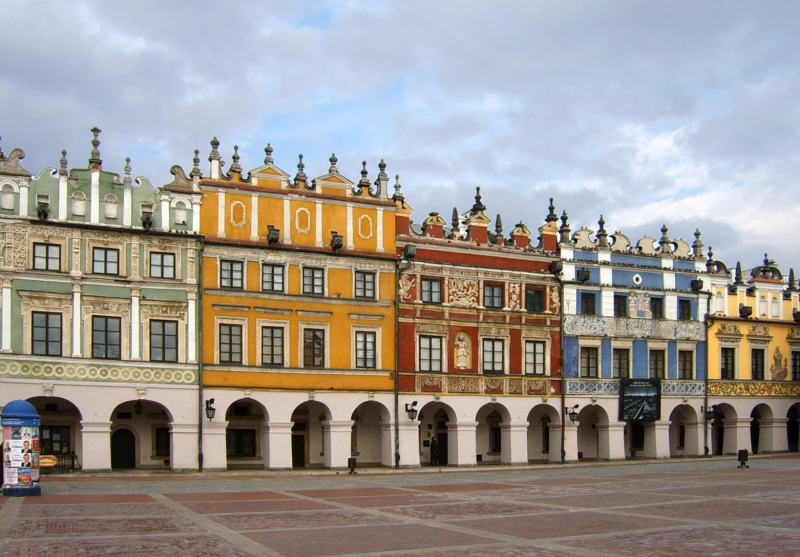
Photo: en.wikipedia.org Video: UNESCO -
The Centennial Hall, formerly known as Hala Ludowa ("People's Hall"), is a historic structure in Wroclaw, Poland. It was built in 1911–1913, under the German Empire, based on the plans of architect Max Berg. Centennial Hall was built by Max Berg to be a versatile facility that could host exhibitions, concerts, dramatic and opera performances, and sporting events. The hall is still utilized for sporting events, corporate meetings, and concerts.
With an inner circle of 69 m (226 ft) and a height of 42 m (138 ft), the cupola styled after Centennial Hall was the largest edifice of its kind at the time of construction. The 7,000-person capacity is accommodated by the symmetrical quatrefoil design with a wide circular middle space. The dome is 23 meters (75 feet) tall and built of steel and glass.
In the twentieth century, the Jahrhunderthalle became an important reference for the development of reinforced concrete structures. A superior dome with a lantern is located in the structure's center. From the inside, there is an obvious pattern of the Iron Cross at the top of the dome; as a result, the center of the structure was shrouded during Poland's Communist era.
As an early example of reinforced concrete construction, the Centennial Hall was recognized as one of Poland's official national Historic Monuments on April 20, 2005, along with the Four Domes Pavilion, the Pergola, and the Iglica. The National Heritage Board of Poland maintains its listing. In 2006, it was also designated as a UNESCO World Heritage Site.
Location: Wrocław, Lower Silesia, Poland
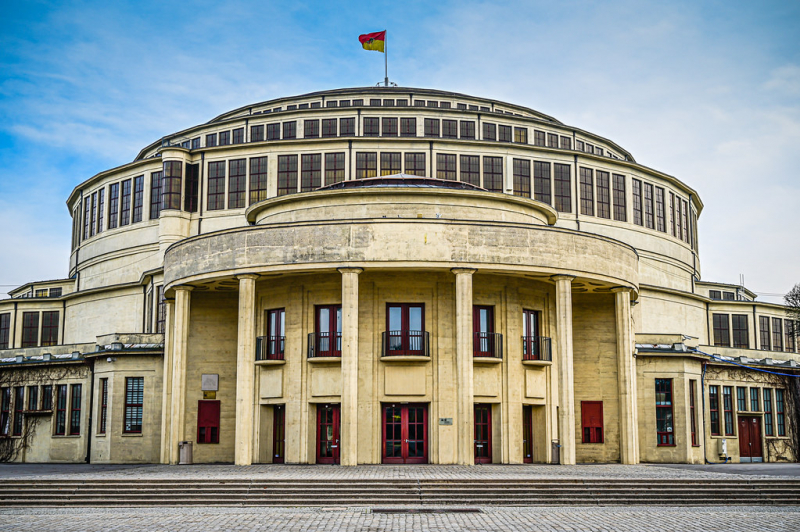
Photo: flickr.com Video: Traveling FOX































